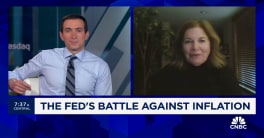More lenders are seeing an easing of mortgage lending standards Fannie Mae said today. In its third quarter Mortgage Lender Sentiment Survey indicators of loosening standards jumped substantially for both GSE eligible and non-GSE eligible loans.
In the survey mortgage executives were asked whether their lending organization's credit standards have eased, tightened, or remained essentially unchanged for the two types of loans as well as government loans during the prior three months. The gap between the numbers of lenders reporting easing as opposed to tightening jumped to 20 and 18 percentage points for GSE eligible and non-GSE eligible loans, respectively-reaching new survey highs of "net easing." The share of lenders who predict their organizations will ease credit standards over the next three months also rose for both GSE and non-GSE eligible loans.
"For the first time in seven quarters, we see a pronounced increase in the share of lenders, particularly medium- and larger-sized lenders, reporting on net an easing of credit standards in both the GSE eligible and non-GSE eligible loan categories. This is a significant result in light of public discourse on credit availability and standards," Doug Duncan, senior vice president and chief economist at Fannie Mae said. "Our survey responses appear to reflect multiple factors at play. Lenders may be becoming more comfortable with the GSEs' updated guidelines intended to provide them greater certainty regarding representations and warranties. Lenders also may be getting more familiar with the regulatory and compliance environment. Finally, lenders may be removing credit overlays. Overall, we expect that lenders' tendency toward easing credit standards, together with relatively low mortgage rates and a strengthening labor market, will continue to support the housing market expansion."
The survey, a counterpart to Fannie Mae's monthly National Housing Survey conducted among consumers, found that senior mortgage executives continue to be more optimistic about the economy than consumers and more optimistic about future home prices as well, but are less optimistic when it comes to how easy consumers might find it to get a mortgage.
Fewer lenders reported a growing demand for home purchase mortgages than did so in the second quarter. The same was true for the number of lenders expecting increased demand over the next three months although Fannie Mae said this was in part due to seasonal influences. More lenders made optimistic predictions about demand than did so at the same time last year.
Other survey findings included:
- More institutions reported they expected to increase rather than decrease the percentage of their originations sold to the GSEs and Ginnie Mae over the next 12 months.
- More lenders said they expected to decrease rather than increase the share of their MSRs sold to a third party. The same was true of lenders who expect to increase rather than decrease the share of their MSRs retained and serviced by a subservicer.
- The share of lenders reporting an increased profit margin outlook over the next three months has fallen significantly this quarter from last quarter, but reached a similar level seen in the same quarter last year (Q3 2014).
Fannie Mae surveys senior executives of Fannie Mae lending institution customers quarterly to assess their views across varied dimensions of the mortgage market. The survey reported here was conducted between August 5, 2015 and August 17, 2015.







